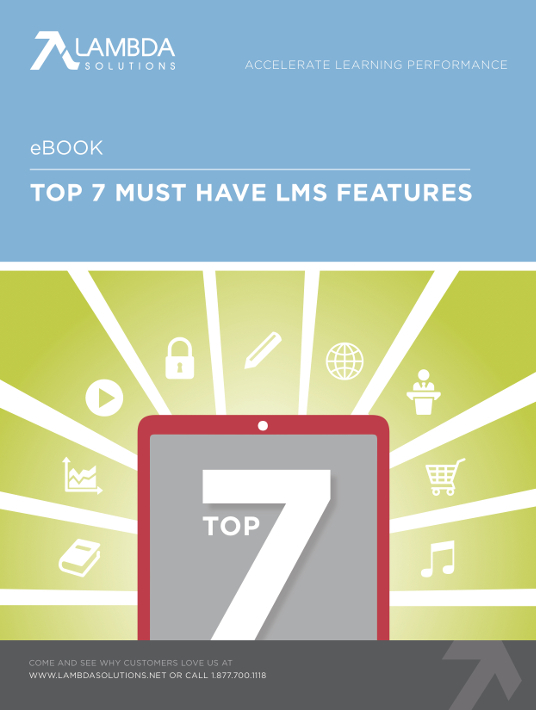The Benefits Of Online Learning For Teachers
Access to online learning resources has triggered a revolution in classroom settings from K12 all the way up to postsecondary institutions. eLearning is no longer a simple byproduct of the age of information and access to the internet. It’s become an invaluable resource to educators and classroom teachers, harnessing a new model of knowledge sharing wherein students now possess the tools to learn at their own pace.

What’s more, online learning is entirely capable of empowering a motivated student to progress beyond the confines of any particular project, exploring and learning ahead of the mandatory curriculum assigned by the teacher. This student-focused approach is unique in that students now share in their educational direction, maximizing both teaching resources and time.
1. Individual Pace
Online learning solutions provide much-needed effectiveness for teachers, allowing them to maximize the potential for individual learning curves and styles within the classroom. Many online learning solutions account for self-paced learning, and allow students and teachers to collaboratively work together to meet scheduled targets.
Learning Management Systems like Moodle, for example, reduce administration time, allowing for more time spent teaching. Embracing Learning Management Systems helps teachers track individual student progress more easily by using interactive charts for group and individual reporting as a way to minimize the time between performance and consequent teacher response.
Interested in incorporating online learning for your classroom? Ask your school administrator or university managers to consider adopting an online learning LMS like Moodle or Totara to give your students–and yourself–more opportunities to learn.
2. Application Of Theory
Now more than ever, children, youth, and students are learning every day by non-conventional means. They’re accessing information and news online, as well as communicating, sharing, and exchanging ideas and concepts via technology. Online learning enables teachers to tap into this realm of constant learning by embracing the real-world application of theory through multimedia, video, chat, and interactivity. Educators can effectively harness the power of everyday technology to bring educational theories into the classroom.
Aside from use in the teacher/student domain, teachers can apply the same use of communication and idea exchange to stimulate interactions between parents, teachers, and their students. Researchers at the Mauritius Institute of Education and London’s Brunel University conducted an experiment to gauge how technology could be used to transform the teaching and learning process, and found that interactive environments promote students’ cognitive development driven by the affective domain–the fundamental elements of learning that affect emotional development–like interest, motivation, and values.
Of particular note, the study found that integration of this affective domain into the education model via real-world application of theory established a network of collaboration between all key educational stakeholders including teachers, students, and parents.
3. Practicality
In modern times of global economic and political instability, federal and provincial/state education budgets are often placed on the chopping block. Cuts to funding can mean cuts to budgets and, more importantly, time. This places access to modern technology and online learning at the forefront of progressive learning solutions. Online learning is an incredible way to compensate for reduced access to teaching information and time dedicated to tracking student progress.
The practical benefits to teachers can be measured in terms of time-based efforts and workload reduction. For example, using an LMS allows teachers to quickly create tests/quizzes using a pre-existing, or ever-expanding question bank. LMS technology also permits the automation of marking those tests and quizzes. Practical benefits also include the ability to track the submission of digital assignments, reuse or reconstruct a course curriculum using new course templates.
4. The Way Of The Future
Online learning offers significant benefits for educators. The Babson Survey Research Group notes online course registration growth has remained consistent for the past 13 years, growing to 5.8 million nationally (US). Further, they have found that over 25% of all higher education students are now enrolled in at least one online course.
These statistics dictate not only the perceived advantages of online course availability but their success as an alternative to traditional classroom learning settings. It’s estimated that by 2019, at least 50% of all post-secondary courses will be delivered online, providing schedule flexibility and cost-effectiveness for educators, as well as access to new learning platforms and the opportunity to learn from celebrated educators located elsewhere in the world via long-distance education. This translates directly as an aid to teachers, who can make larger impacts on broader populations of students, maximizing the spread of knowledge, and the development of educational practice through access to online learning resources.
In elementary school settings, blended approaches to online learning allow both teachers and students to access a wide variety of modern teaching/learning tools and resources. Roughly 1 million children in the United States alone are actively participating in a form of online education, allowing disenfranchised areas and schools access to the best teachers - entirely free from the confines of geography.
5. Access To Training
Good teachers love to teach, but further, the best educators enjoy the opportunity to learn on a consistent basis. Teaching with eLearning resources as a means of updating and honing one’s approach to teaching forces teachers to constantly up their game, in turn making professional development a daily activity.
This concept represents a pivotal twist for those - like us - who advocate for the integration of online learning in mainstream education. Instead of using technology as a substitute for human interaction, it’s the indirect benefits of technology and online learning that promote the goals of access to online learning for empowering teachers with the tools to help in the classroom.
Technology and access to online learning help teachers to share a readily available source of unlimited academic content, as well as learn themselves how best to share and personalize this vast network of content to students. This access to training acts as a vessel to help teachers understand what type of education is working for their students, supporting changes and adaptations to lesson plans.
The Focus Of Educational Technology: Putting Students First
The biggest benefit of Learning Management System (LMS) platforms and eLearning opportunities are that teachers are able to focus their energies on pedagogical functionality. The ability of teachers to automate marking, digitally issue tests and quizzes, and track student progress with reporting tools and analytics makes the education landscape a more accommodating and innovative industry that puts students first.
Online learning isn’t just capable of empowering students to progress beyond the course expectations, but it encourages them to explore and learn ahead of the curriculum in a way that makes learning functional, relevant to today’s growing inclusion of technology, and fun.









